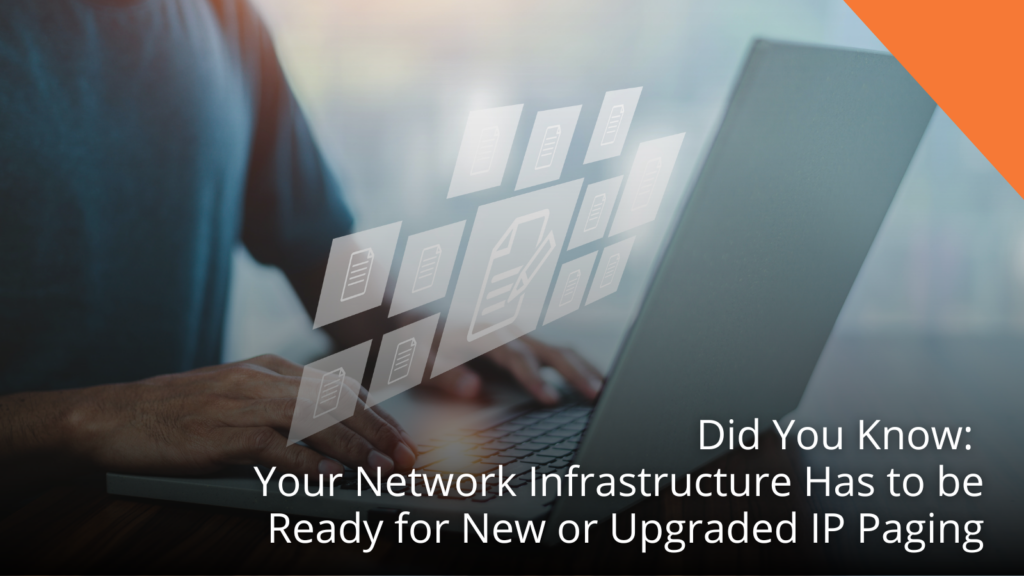Did You Know: Your Network Infrastructure Has to be Ready for New or Upgraded IP Paging

When looking into new or upgraded IP paging equipment, many people don’t realize that you also need to ensure your network infrastructure is prepared for these changes. I am one of those people. In a recent training session on IP paging, I realized that a lot of things were mentioned regarding the network and what was required to ensure the infrastructure could support a new or upgraded system. This caught me by surprise, so I asked, “Do a lot of people know about this or ask about this when looking into an upgraded or new system?” The answer I received was, “Typically no, and we make sure to educate them on this aspect.” So, what a perfect lightbulb moment for me to think. I should write a blog about this so that more people are aware. So, I will cover what you should know and do to ensure a seamless integration of a new or upgraded IP paging system with your network infrastructure.
IP paging systems rely on your network to transmit audio and data efficiently. Before implementation, assess your network’s bandwidth and performance to ensure it can handle additional traffic without causing delays or congestion. You can speak with your ISP or IT provider about this or there are several sites you can use to evaluate your bandwidth usage and internet speed.
Most modern IP paging devices use Power over Ethernet (PoE) for power and data transmission over a single cable. Verify that your network switches support PoE and can supply adequate power to all paging endpoints. If not, consider upgrading to PoE-enabled switches or using PoE injectors.
Configure and optimize Virtual Local Area Networks (VLANs) for improved performance and security to segment your IP paging traffic from other network services. This prevents congestion, enhances quality of service (QoS), and ensures paging messages are delivered with minimal latency.
If your organization uses a VoIP phone system, ensure that the new IP paging system is compatible with your Session Initiation Protocol (SIP) infrastructure. Check with your VoIP provider or IT team to confirm seamless interoperability and proper SIP trunk configuration.
With IP paging systems being part of your network, security is a key concern. Implement firewalls, secure VLANs, and access controls to prevent unauthorized access. Regularly update firmware and monitor network activity to mitigate potential cybersecurity threats.
Your paging needs may grow over time, so it’s crucial to plan for scalability. Choose an IP paging solution that supports expansion and integrates network equipment that can accommodate additional devices without significant infrastructure changes.
Before full deployment, conduct thorough testing to ensure clear audio transmission, proper device registration, and seamless integration with existing systems. Once operational, continuously monitor system performance and address any issues promptly.
Here are some more resources for you.
How to Secure Your IP Paging System
How To: Upgrade & Save Money on IP Paging in Educational Environments
Troubleshooting New Deployments
IP Paging Systems vs. Analog Paging Systems
Ensuring your network infrastructure is ready for an IP paging system upgrade requires careful planning and assessment. By evaluating bandwidth, implementing QoS, securing your network, and testing the system, you can create a reliable and efficient paging solution that meets your organization’s communication needs. Proper preparation not only ensures smooth deployment but also enhances the long-term performance and security of your IP paging system. If you have any questions or comments, you can leave them below, chat with one of your VoIP Experts at www.voipsupply.com, or call us at 1-800-398-8647.




